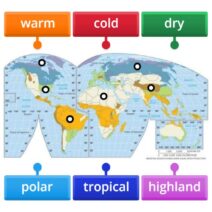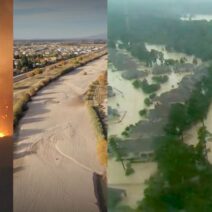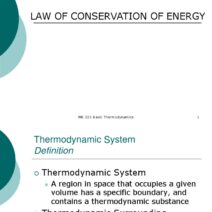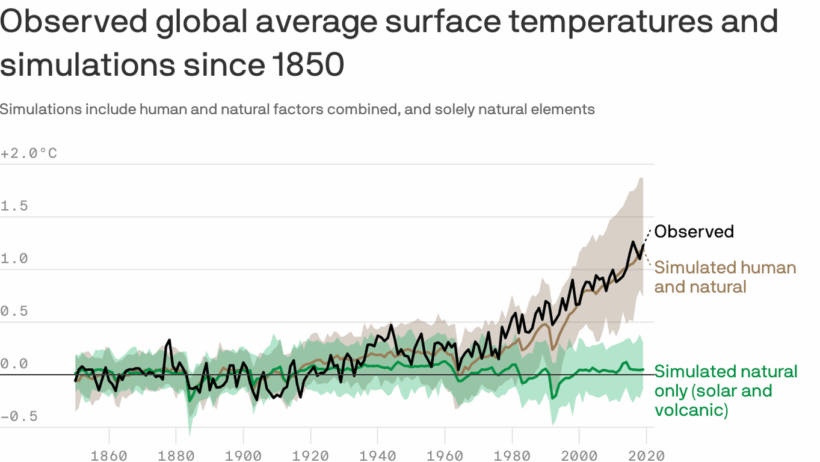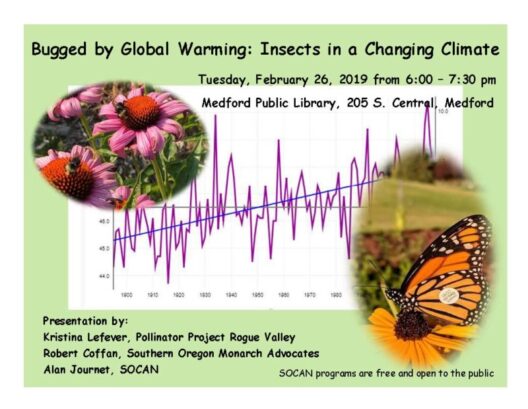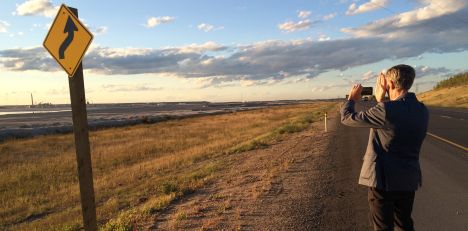As we look out at the world today, one pressing question looms large: are humans the primary architects of global warming? It’s not an easy query to answer. The stakes are high, and the implications are dire. What if humans aren’t the main contributors after all? Wouldn’t that be a surprising twist, challenging conventional wisdom? However, overwhelming evidence suggests that human activity is indeed the principal factor driving climate change.
To unpack this assertion, it is vital first to understand the fundamentals of climate science. The Earth’s climate operates through a delicate balance. Solar radiation enters the atmosphere, and the planet’s surface absorbs it. This energy is subsequently radiated back into space. Yet, certain gases, known as greenhouse gases, trap some of that outgoing energy, creating a natural “greenhouse effect.” This phenomenon keeps the planet warm enough to sustain life. However, industrial activities, specifically the combustion of fossil fuels, have exponentially increased the concentration of these gases in the atmosphere, thus intensifying the greenhouse effect.
Carbon dioxide (CO2), methane (CH4), and nitrous oxide (N2O) are crucial players in this narrative. The Intergovernmental Panel on Climate Change (IPCC) has meticulously documented that since the Industrial Revolution, atmospheric CO2 levels have risen by over 40%, primarily due to human activities such as burning fossil fuels and deforestation. This uptick in greenhouse gas emissions correlates with a marked increase in global temperatures. But does correlation imply causation? The scientific method provides a robust framework to investigate this, establishing a compelling case that human actions are fundamentally responsible for climate change.
One might ponder how climate models substantiate this theory. These computational tools ingest vast amounts of data regarding atmospheric conditions and simulate the Earth’s climate systems. Numerous studies reveal a convergence of results across diverse models that consistently predict dramatic temperature increases, assuming current rates of greenhouse gas emissions. The challenge emerges when examining the shifts in temperature against natural variables, such as ocean currents and volcanic activity. Historical climatic data indicates that while the Earth has undergone various climatic shifts, the rapid increase in temperature over the last century cannot be attributed to natural cycles alone. It is the anthropogenic influence that emerges as a key variable.
Examining past epochs provides further insight. The Paleoclimatic record reveals that the Earth has experienced periods of warmth and cooling. However, these changes occurred over millennia, allowing ecosystems to adapt. In contrast, the current rate of warming is unprecedented. The transition from the last glacial maximum to the present interglacial period took thousands of years, whereas present-day increases in atmospheric temperatures have unfolded over just a few decades. This stark difference poses a formidable challenge to those who seek to downplay human impact.
Moreover, another area of concern is the feedback loops initiated by climate change. For instance, as polar ice caps melt, less sunlight is reflected back into space, exacerbating warming. Similarly, thawing permafrost releases methane, a potent greenhouse gas. These phenomena demonstrate that the ramifications of anthropogenic climate change extend beyond mere temperature rises, potentially triggering catastrophic changes in ecosystems and weather patterns. The resilience of both human and natural systems is tested under these conditions, leading to profound implications for biodiversity and food security.
The geographical disparities in the impacts of climate change further complicate the narrative. Vulnerable populations, particularly in developing countries, bear the brunt of climate-related disasters, often having minimal contributions to greenhouse gas emissions. This injustice raises ethical questions about responsibility and action. Should wealthier nations, historically the largest emitters, take the lead in combating climate change? The challenge remains substantial, as global cooperation is essential for effective mitigation strategies.
In recent years, scientific consensus has cemented the belief in human-caused climate change. Yet, public perception remains deeply divided. Disinformation campaigns and political rhetoric obstruct clear understanding, presenting a formidable barrier to both policy development and individual behavior change. A playful question emerges: how do we bridge the gap between science and society? Engaging communication strategies that resonate more deeply with the public could be a pivotal solution. Individuals need to understand how climate policies affect their lives and the future of their children, creating a personal stake in these monumental issues.
Renewable energy sources offer a beacon of hope. Transitioning to solar, wind, and other sustainable forms of energy not only provides a path to reduce emissions but also stimulates economic growth and job creation. Innovations in technology and engineering present opportunities to embrace a sustainable future while addressing climate change effectively. The challenge lies in mobilizing collective effort towards these solutions.
The evidence is compelling: humans are the main contributors to global warming. The path forward is fraught with challenges but also ripe with possibilities. As we navigate this complex landscape, it’s imperative to arm ourselves with knowledge, engage in informed discussions, and advocate for policies that align with environmental sustainability. If humans exert this much influence on climate change, imagine the positive impact they can have in reversing its effects. The planetary stakes have never been higher, but the potential for change is equally tremendous.
